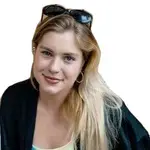Sin Eater

Wikimedia CommonsAn image from the book Ars Moriendi (The Art of Dying).
In the 18th and 19th centuries in England, Scotland, and Wales when a family member or loved one passed away, a particularly interesting ritual took place that required a specific kind of job.
People generally requested the services of a sin-eater after someone had died to metaphorically get rid of their sins. The way it worked is that someone would place a piece of bread over the deceased person’s body, which at the time was believed to soak up the sins of that person, and then the sin eater would eat the bread and wash it down with some ale.

The Print Collector/Print Collector/Getty ImagesA painting of a Scottish funeral.
The idea was that the sins would then inhabit the sin eater’s body, and the departed would be able to get into heaven free of sin and without any issues.
Sin eaters took this job mostly because they were seen as outcasts in their society already, unable to find work elsewhere. Because they were already shunned by the community, it was fitting that they’d eat other persons’ sins and performed a service.
When not at a funeral to do their job, sin eaters were homeless and lived life pretty much in squalor. Villages usually had their designated village sin eater, and believed that with each visit they made they became more and more evil with all the sins they’d been consuming.
It was definitely not a desirable job, but it was considered a necessary one at the time.





